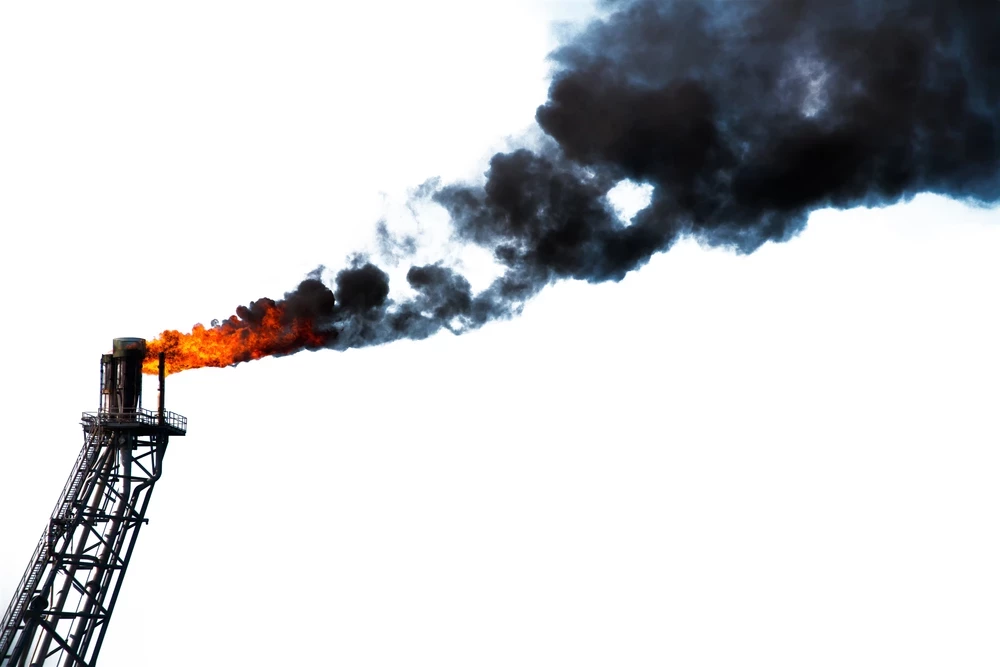What is flow assurance?
Your essential guide to the most important part of the oil and gas industry
Add bookmarkFlow assurance: what does it mean?
Flow assurance is a new term in the oil and gas industry, originating in the 1990s, and coined by Petrobras. Translated from the Portuguese, this meant ‘guarantee of flow’ – or the ensuring that fluids produced by a fuel reservoir consistently and reliably reach the point of separation into discrete compounds. More recently, the term has come to encompass the entire supply chain, from source to end-user.
Despite its various definitions in the past twenty-five years, garantia de escoamento broadly involves the identification of potential oil and gas fields and wells, and the logistics behind transporting any fuels to storage or processing facilities as efficiently as possible. Flow assurance is therefore particularly important (and difficult) with offshore operations.
In a sentence: flow assurance is the process by which fuel production is guaranteed through the minimising of restrictions on physical fuel flow.
Flow assurance in offshore operations
With multiple assets and asset teams, it is vital that everybody involved in offshore operations is communicating efficiently and effectively. A team leader working in flow assurance should be able to understand and disseminate the biggest risks their system is facing: the personnel working on-site need to be confident in their ability to monitor fuel flow, and those on-shore should be in constant contact.
Modelling the risks associated with flow assurance is a difficult task, but a thorough understanding of each key stakeholder should allow a full risk profile to be drawn up. Due to the sheer number of stakeholders and associated risks with offshore operations, there usually has to be one risk manager per asset – which means that complex operations have an abundance of interfaces. Put simply, high-level managers often struggle to account for who is doing exactly what within the business.
What does flow assurance actually entail?
There are a wide variety of techniques that can be employed to limit stoppages to fuel flow. Originally, flow assurance only covered the analysis and evaluation of the problems caused by solids forming in pipelines, but now covers any and all risks associated with maintaining flow. The field is now considered closer to risk management than to avoidance.
Managing risks with fuel flow begins whenever the equilibrium of the fuel in question is disturbed, or when the well is sunk and fuel flows out for the first time. From this point onwards, whenever oil or gas passes from one stage to another, there is an associated risk of changes in state within the fuel. This will usually involve liquid matter producing gasses, gasses condensing into liquids, or solids forming. Because Petrobras’ original definition of flow assurance was developed whilst working with the high-pressure, low temperature environments of deepwater fields in mind, the theory has developed rapidly alongside the industry’s push into ultra-deepwater fields.
To ensure the system operates as expected, the formation of hydrates, wax, asphaltenes, scale, and emulsions must be anticipated, limited, or prevented. Multiphase flows – multiple materials in the same state, such as oil and water in liquid state, or the simultaneous flow of liquid and gas fuel – greatly increase the risk of unwanted formations or emulsification, as do flows where the thermal dynamics of fuel are likely to change.
Flow assurance risk assessments
Without a proper viability study of a potential discovery, particularly in a deepwater site, the flow of fuel can remain uncertain until it’s too late to prevent recurrent issues. A properly integrated flow assurance plan includes a full risk assessment, covering
- The modelling of multiphase flows and temperature changes,
- The projection of hydrate, wax, asphaltene, scale, and emulsion formation,
- The interface with other departments and operational processes, such as engineering.
If implementing a strategy into a system that is already operational, as is most often the case, a full flow assurance analysis will have to be conducted – from taking fuel samples to implementing a prevention strategy. As with the definitions of flow assurance, the models for prevention strategies vary, but broadly adhere to the following structure:
- Sampling – wherein data is collected from fuel samples at various points along the supply chain,
- Analysis – taking the raw samples and analysing them along various criteria, providing more detailed data than in-field sampling alone,
- Scenario modelling – during which the data is used in a series of flow assurance scenarios to model various outcomes.
Once these three processes have been completed, the company in question can begin to work on selecting a strategy for preventing, remediating, or optimising their flow assurance.
Sampling
With huge variance in the properties of oil, gas, and water across the world, and within individual fuel fields, it is vital to ensure that the properties of the fuel in each well is researched, recorded, and updated. Samples should be drawn from various depths using a sampling device lowered into the well, with the device being used to extract samples from the well wall wherever possible.
The most difficult part of the sampling process, however, is the transportation of fuel to the testing facility – as any changes in temperature or pressure can alter the state of the fuel and invalidate the sample.
Analysis
The analysis of fuel should determine its water composition, from water content by distillation to water and sediment analysis. If a company does not know the water content of its products, then equipment can be damaged by unwanted levels of salinity and moisture, processes will not run at full optimisation, and products can fail to meet industry or international guidelines. Testing and analysis should also determine how the fuel behaves when its pressure, volume, or temperature are changed, often called the PVT measure.
Another part of the analytic process is the thermal hydraulic testing process, covering the effects of multiphase heat transfer, fluid mechanics, and thermodynamics. The analysis into multiphase heat transfer can determine the points at which the fuel boils whilst flowing or stagnant, and the critical heat flux point; fluid mechanics testing can establish how the fuel moves and reacts when under different forces; and the thermodynamic tests cover the state of the fuel through its entire thermodynamic cycle.
Most fuel assurance analysis also includes tests for wax appearance, the solubility of asphaltenes, and scanning for additional organic compounds.
Scenario modelling
The modelling part of the process transforms data into a picture that can be used to create an actionable flow assurance strategy. The model is built using all thermohydraulic data from the analysis stage, and creates a complete picture of how the system functions – from the transient states of start-ups and shutdowns, to normal efficient running. Throughout this process, the number of options for a potential strategy should decrease until an optimal plan remains.
Flow assurance strategies
Flow assurances strategies are the bulwark of an efficient operation, encompassing three main approaches – prevention in the first instance, remediation if issues are detected, and optimisation strategies to improve overall effectiveness.
Prevention strategies
Prevention strategies are the ideal for oil and gas companies, as they should prevent issues occurring, and negate the need for complex and expensive remediation further down the line, and minimise the shutdown time that can occur due to blockages. Maintaining the operation is of utmost importance, and all on-site operators should be fully aware of the procedures required as per the prevention strategy. The strategy should detail what to do in the event of any breakdowns, how to avoid slugging, and the optimal rate of flow.
The incorporation of chemicals is a major part of any flow assurance prevention strategy, and any chemical strategy will be aiming for at least a 50 per cent efficiency in preventing operation-halting issues. Any chemical intervention requires a thorough evaluation of the package’s performance, and must be easily deliverable upstream of the issue. It is critical that the chemicals themselves do not fundamentally alter the conditions in the pipeline, or react with any other solutions in the fuel.
Prevention strategies are incorporated early in the design process of the project in question, and should include all elements of the operational side of things: layout of the assets, the materials and specifications of every pipeline, the requirements of each well, and a breakdown of the organic make-up of the field.
Remediation strategies
Remediation strategies can be built into an operation from very early on, usually in the form of mechanisms primed to release a chemical solution into the fuel, or to alter the PVT environment, as soon as any issues are detected.
Optimisation strategies
Optimisation strategies technically cover both prevention and remediation plans, but can more broadly be used to describe any strategy that improves the operations-side of fuel flow. In addition to the technologies mentioned above, optimisation strategies also include:
- Operations forecasting technology – enabling look-ahead,
- Control systems checking,
- Auto-pilot systems allowed closed-loop control,
- Virtual well metering,
- Additional engineering simulations.
A proper optimisation strategy will improve production rates, ensure the operations is compliant with EH&S requirements, and create an adaptable system that can handle challenges to the normal run of events. All of this will reduce down time, costs, and the amount of training required if issues do arise.
Outlook
As operators begin to focus more and more on the improvement of safety in production, flow assurance strategies will become ever more vital to the health of the industry – allowing companies to remain efficient and compliant. Combined with the drive to have facilities take up ever smaller areas, and to rely on fewer resources to maintain them, this is the main driver for growth in the flow assurance solutions market. Tiebacks and subsea systems will become more common, and more and more data will be produced at every point of the process. Avoiding the languishing of data in swamps, and creating actionable plans from an abundance of information will be vital in the coming years – and a great opportunity for solution providers to become involve in more projects.
If you enjoyed this guide, why not check out our introduction to the oil and gas industry? Stay tuned to Oil & Gas IQ for the latest content, videos, and guides.



















